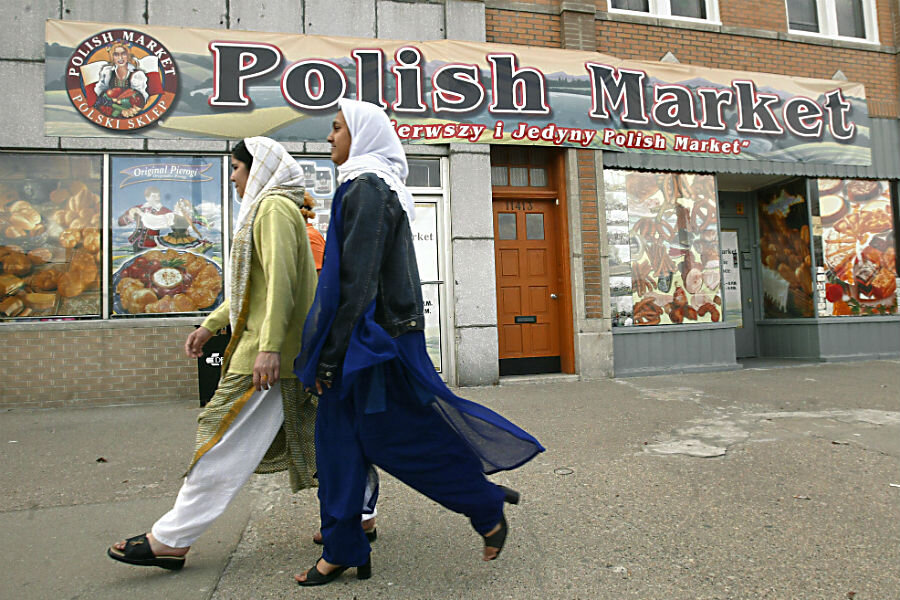First Muslim city council: Portrait of a changing Michigan city
Loading...
The election of a majority-Muslim city council in a Detroit-area town illustrates the growth of a young, Westernized generation of Muslim-Americans in the US.
It's a generation of American Muslims trying to retain the values of previous generations while establishing itself in a country that still exhibits some Islamophobic sentiments stemming from the 9/11 terrorist attacks.
For most of its history, Hamtramck, Mich., was a Polish city, but in recent decades it became increasingly Muslim. In 2013, it became the first city in America to have a majority Muslim population, with most immigrants coming from Yemen, Bangladesh, and Bosnia. And last week, it elected a majority-Muslim city council – Muslims now occupy four of the six council seats – likely the first American city to do so. Karen Majewski, the city's mayor, is of Polish descent.
In many ways the new council members epitomize the modern struggles of this young generation of Muslim-Americans. As candidates they were associated with terrorism and saw their citizenship questioned, the Standard Daily reported. After the election, they stressed that their faith will not define their work.
"I'm a very good Muslim," said Abu Musa, an immigrant from Bangladesh who was re-elected to the council, in an interview with the Detroit Free Press. "But when I get elected, every single [ethnicity] votes for me, not [only] the Muslims vote for me, but Christians, every single ethnic group."
"I represent every single citizen in Hamtramck," he added. "I'm serving all the city of Hamtramck."
Balancing their faith with their desire to integrate into mainstream American life is a defining struggle for many young Muslims. Fifty-nine percent of Muslim-Americans are between the ages of 18 and 39, the fastest growing demographic in the Muslim-American population. But as they assert themselves politically in towns across the country, they also run into occasional reminders of anti-Muslim sentiment that has persisted in the country since the 9/11 terrorist attacks.
Last year, The Christian Science Monitor’s Lee Lawrence reported that many of this generation of young Muslims "are as culturally American as the 37 percent of adult Muslims who … were born here and are, in turn, raising American-born children."
Mr. Lawrence added:
Nevertheless, the perception of Muslim as "other" – and a dangerous or suspicious other, at that – persists, stoked by post-9/11 insecurities. One of the reasons is that most Americans know little about Islam and, in many cases, don't know a Muslim personally. When they do, stereotypes fall away, revealing a diverse and dynamic population that is doing what Americans have historically done: figuring out how to be themselves.
Gallup recently reported that, while Islamophobia existed in the US "in premise" before the 9/11 attacks it increased in frequency and notoriety in the decade after. There has been a decline in Islamophobia in America since 2010, according to a 2013 report from the Council on American Islamic Relations, but some recent incidents indicate that prejudice still exists.
In September, for example, a Muslim high school student was arrested after bringing a homemade clock to school that was mistaken for a bomb. A local Islamic leader blamed the arrest on political leaders creating a "climate of fear."
Such prejudice appears to be fading in Hamtramck, where locals are discovering that Muslim city councilors can accomplish just as much for the city as any other councilor.
Bill Meyer, a Hamtramck community leader who isn’t Muslim, told the Detroit Free Press that Muslims in the city have "helped bring stability, security and sobriety while lessening the amount of drugs and crime in the city."
"Hamtramck has made history," he added.






